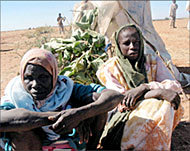Key facts on Sudan and its conflicts
Donors at a two-day conference in Norway have exceeded Sudan’s aid requests by pledging $4.5 billion to help southern Sudan recover from a civil war.

Here are some key facts on Sudan and its conflicts:
* Sudan is Africa‘s largest country with an area of 2.5 million sq km. It straddles the middle reaches of the Nile and is bordered by Egypt to the north; the Red Sea, Ethiopia and Eritrea to the east; Kenya, Uganda and the Democratic Republic of Congo to the south; and the Central African Republic, Chad and Libya to the west.
The north-south conflict:
* In 1983, the Sudan People’s Liberation Army (SPLA), the main southern rebel group led by John Garang, launched a war against the northern-based government.
* The war pitted the south, which is mainly Christian and animist, against the mainly Muslim, north. The war is complicated by tribal and factional fighting, as well as the conflict over oil.
Oil exploration
* Oil exploration began in the 1970s, but operations were repeatedly interrupted by the southern rebellion, with rebels laying claim to oil fields that provided the government with vital revenue.
 |
|
In 2004, deal between SPLA and |
* In 2004, a deal, sealed by the southern rebel Sudan People’s Liberation Army (SPLA) and the Khartoum government, cleared the way for a comprehensive peace to end the 21-year-old civil war in the south that claimed more than two million lives.
* Eight peace protocols were signed in January including:
– The South will have the right to vote for secession at the end of a six-year interim period.
– Fifty percent of net oil revenue derived from oil in southern Sudan shall be allocated to the government of southern Sudan at the beginning of the pre-interim period. The remaining 50% to go to the national government and northern states.
Darfur in the west:
* Rebels took up arms in February 2003 accusing Khartoum of discriminating against farmers in Darfur. More than two million Darfuris, mainly subsistence farmers from a wide variety of ethnic groups have fled their homes.
Janjawid
 |
|
Tens of thousands have suffered |
* Militias known as the Janjawid, allegedly drove farmers from their land.
* The Sudanese government has said the Janjawid are outlaws and has vowed to disarm them.
* Tens of thousands of people have died from disease and starvation during the years of fighting.
* The prospect of peace in a separate conflict in the south of Sudan may have emboldened the rebels to believe they could win a better deal by resorting to arms, analysts say.
Shilluk Kingdom in the south:
* Conflict sprung up last year in the Shilluk Kingdom of Upper Nile region in eastern Sudan, described by one regional observer as “another Darfur“.
* The United Nations said last June 50,000 to 70,000 people have been displaced in Shilluk in fighting between government forces and SPLA rebels.
* Analysts said the fighting in Shilluk followed senior Shilluk politician Lam Akol’s decision in October 2003 to rejoin the SPLA more than 10 years after he broke from the movement.